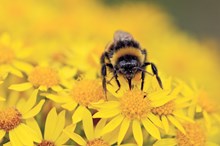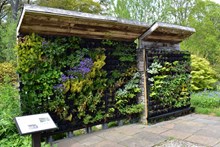23 October, 2019
Developers urged to help pollinators

Developers are being encouraged to do more to help butterflies, bees and other pollinators in our towns and cities.
Scottish Natural Heritage (SNH) has published new guidance for the planning and construction industry to create a more resilient and nature-rich urban environment.
Pollinators including bees, wasps, moths, butterflies and flies are vital for our biodiversity, but populations face challenges due to changes in land use, habitat loss, diseases, pesticides and climate change.
The new guide offers advice on how best to fit pollinators into urban design and construction with a series of easy to follow steps to suit all project budgets and sizes.
Wildflower meadows, flowering trees, hedgerows, nectar-rich plants and herbs, window boxes, green roofs, living walls and sustainable drainage systems can all help expand the habitats of pollinators.
As well as helping nature, these simple steps create more attractive environments for living, working and travelling, support local authorities in meeting biodiversity priorities and contribute to developers’ corporate social responsibility.
Improving pollinator habitat can also help save money – for example the cost savings from reducing the mowing of parks and road verges.
SNH Chief Executive Francesca Osowska said: “The recent State of Nature report set out clearly the pressures our biodiversity is under and, like much of our wildlife, pollinators are facing a multitude of challenges.
“Improving our urban greenspace will provide vital habitat and can also help us adapt to and mitigate climate change.
“High-quality developments that protect and enhance our nature are good not just for businesses but importantly for people too, with attractive greenspace in urban areas known to boost our health and wellbeing.
“I’d encourage everyone in the sector to take a look at this guide and consider how they could do more to plan for pollinators and help create a nature-rich future for everyone in Scotland.”
ENDS
For more information, contact the SNH press office on snhmedia@nature.scot or 0131 316 2655.
Contact information
- Name
- NatureScot Media
- Telephone
- 0131 316 2655
- media@nature.scot
Notes to editors
Read the full Pollinators in Planning and Construction guidance.
SNH’s Pollinator Strategy for Scotland 2017 – 2027 sets out a 10-year plan to address pollinator decline and help pollinating insects thrive.
NatureScot is Scotland's nature agency. We work to enhance our natural environment in Scotland and inspire everyone to care more about it. Our priority is a nature-rich future for Scotland and an effective response to the climate emergency. For more information, visit our website at www.nature.scot or follow us on X at https://x.com/NatureScot
’S e NatureScot buidheann nàdair na h-Alba. Bidh sinn a’ neartachadh àrainneachd na h-Alba agus a’ brosnachadh dhaoine gu barrachd suim a chur ann an nàdar. Tha e mar phrìomhachas againn gum bi nàdar na h-Alba beairteach agus gun dèilig sinn gu h-èifeachdach le èiginn na gnàth-shìde. Tha an tuilleadh fiosrachaidh aig www.nature.scot no air X aig https://x.com/NatureScot



